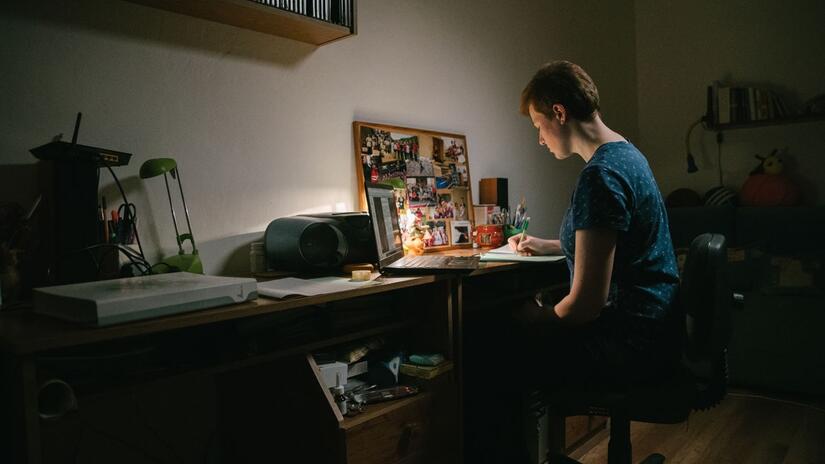In a small town in Slovakia’s southwest, Romy Mikušincová grew up dreaming about discovering the origin of the stars and the universe. It was her curiosity, she says, that made her interested in pursuing a career in science – specifically in astrophysics and theoretical physics.
Today, she is living her dream. She studies theoretical physics and astrophysics at the Roma Tre University, where she researches one of the greatest mysteries of astrophysics: black holes. Black holes are created when stars at the end of their life become so dense they collapse in on themselves and even light cannot escape their gravity.
Still, there is much to learn.
“The study of black holes isn’t a time-limited project because we discover new information every day”, she says. “Currently, I’m working on a simulation of black hole surveillance for IXPE (Imaging X-ray Polarimetry Explorer), a satellite that will be launched by the end of 2021”.
“Giving purpose to my free time”
The time and effort required of a theoretical physics student is immense. But even that is not the only thing that keeps Romy busy. Just as her passion for science grew as a teenager, Romy began another journey as a volunteer for the Slovak Red Cross. “Volunteering was interesting mainly because I wanted to help others, and to give purpose to my free time,” she says.
These days, that free time is mostly spent on a new project that addresses the needs of young people by discussing topics that are not often talked about, but which are key social and humanitarian challenges.
“Our main topics are hate-speech, peer pressure, cyberbullying and gender equality,” says Romy, adding that due to Covid-19 restrictions, most of that work today is online.
The study of black holes may seem like light years from the everyday world of young people and volunteering. But to Romy, there is a clear connection. After all, the scientific method of asking questions, investigation and solving complex problems can also be very useful in the human sphere. “It’s a great advantage when someone from a science background enters the volunteering circle with the mindset of dealing with problems until they are solved,” she explains.

Romy gives a presentation at her old high school alongside her former physics teacher who inspired her to pursue a career as a scientist.
Photo: RCRC Magazine
Accomplishing great things
This dual path of science and humanitarian concern is not new to Romy. Milan Holota, the director at Romy’s secondary school, said her preference for science-related subjects was clear early on, as was her desire to make the world around her a better place.
“Her favourite (subjects) were the natural science classes, and she was exceptional in her extracurriculars,” he said, referring to her after-school work with the Red Cross, where she became one of its most active members.
But she did not do all of this on her own. She recalls that the support of two women – her mother and her secondary school physics teacher – were essential to her pursuit of a career in science and research.
This kind of support can be essential for young women and girls interested in science. For many, such a path is blocked by cultural attitudes that steer girls away from male-dominated topics such as mathematics and science.
According to the UNESCO Institute for Statistics (UIS), there is a clear gender gap in the science field – only 30 per cent of the world’s researchers are women. It was even less in Romy’s class at university. At the beginning of her university studies, only a fourth of the students were women.
“I think it is mainly because girls are not encouraged to pick careers in natural science,” she says. “I want to tell all women and girls to build strong relationships with each other, to stop belittling one another and to help one another because I think that’s how we accomplish truly great things”.

